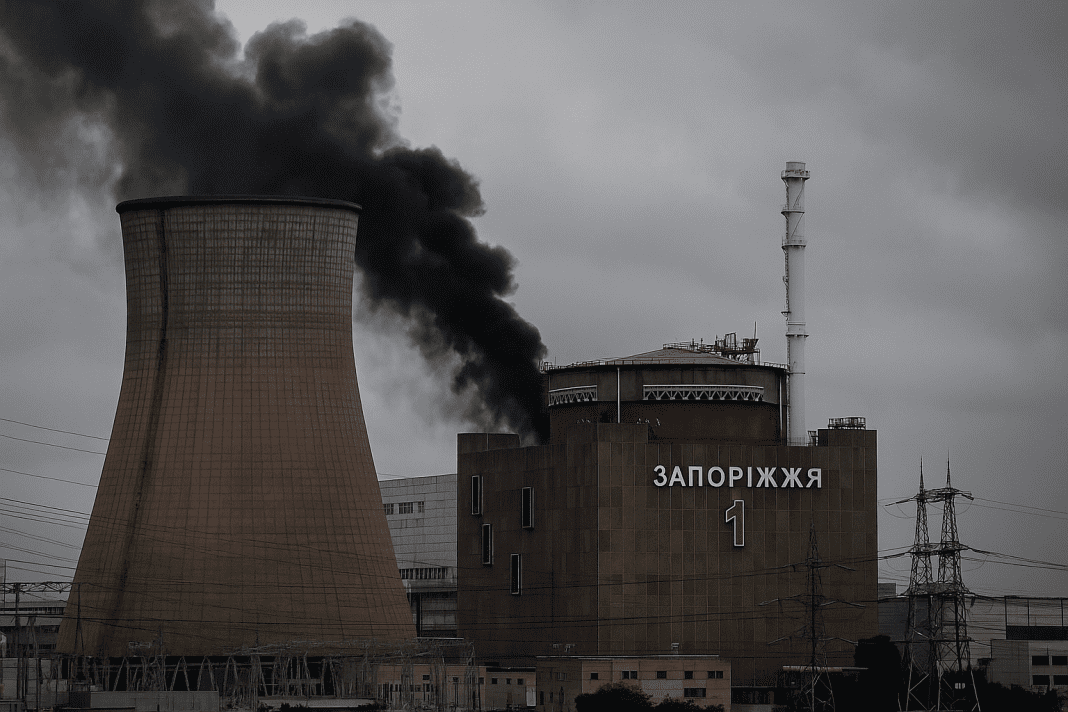A series of explosions and thick smoke were reported near the Russian-occupied Zaporizhzhia Nuclear Power Plant in southern Ukraine.
Blasts and Smoke Near Nuclear Facility
The blasts were observed by international inspectors working on-site. The source of the smoke appeared to be an auxiliary facility located just over a kilometer from the main power plant.
The Zaporizhzhia plant is the largest nuclear facility in Europe and one of the ten largest in the world. Since March 2022, it has been under the control of Russian forces. The recent incident has reignited global concerns over the nuclear safety risks in the war-torn region.
The explosions reportedly began around 9 a.m. local time, accompanied by heavy military activity. The facility under attack is not part of the main nuclear reactors but lies within close range—approximately 1,200 meters from the plant’s main perimeter. Despite the physical distance, the noise and smoke were clearly visible and audible to the monitoring team stationed at the plant.
According to reports, shelling and drone strikes were the likely cause of the damage. Though no fires or immediate nuclear hazards were confirmed, the continued presence of smoke throughout the day was alarming.
IAEA Observes Real-Time Impact
The International Atomic Energy Agency (IAEA) team, stationed at the site to monitor conditions, witnessed the incident in real-time. They heard the blasts and saw smoke columns rising from the direction of the attacked facility. The visuals of the smoke lasted well into the afternoon, indicating prolonged damage or possibly multiple strikes.
Ukraine’s Precision Strike Shatters Russia’s Elite $7M Drone Command Base in Kursk
The attacked location serves support functions but lies alarmingly close to the core nuclear infrastructure. While the main plant remained untouched during this incident, the proximity of the blasts to such a sensitive zone raises serious questions about the safety buffer around the facility.
The IAEA reiterated that any military action near a nuclear power plant—regardless of whether the plant itself is the target—carries significant safety risks. Even indirect damage to nearby systems or infrastructure can lead to unpredictable consequences in a nuclear environment.
Though no radiation leak has been reported so far, the continued attacks near Zaporizhzhia have increased stress levels among international observers and nuclear experts monitoring the site.
Strategic Power Grid Developments in Occupied Zones
Amidst these explosions, another development has drawn attention. New high-voltage power lines are being constructed in southern Ukraine. These lines are reportedly being built by Russian forces in occupied territories such as Mariupol and Berdyansk, both located near the Sea of Azov.
🛡️ U.S. defense on edge — $7.3B pushed to refill missile stock after Ukraine and Yemen strain
The length of these new power lines exceeds 80 kilometers, according to recent reports. Satellite images have confirmed that the project has been active since at least February 2025. The construction appears to be focused on connecting a major substation near Mariupol, which could serve as a link to the Zaporizhzhia Nuclear Plant. The entire connection distance from the substation to the nuclear plant is approximately 225 kilometers.
These new energy links suggest attempts to redirect electricity from the Zaporizhzhia plant into regions currently under occupation, potentially toward Russia’s own energy grid. If this connection becomes operational, it may change the way energy flows in the area, moving electricity out of Ukraine’s control.
This strategy has added another layer of complexity to the already tense situation surrounding the nuclear facility. With explosions happening nearby and power infrastructure being re-routed, the plant has become the focal point of both military activity and energy strategy.
As of now, the main nuclear plant remains operational, and no technical failures have been reported. However, the combination of military strikes and new power line installations has raised widespread concern. The situation continues to evolve, and each new incident further emphasizes the fragile security of critical nuclear infrastructure in active conflict zones.

